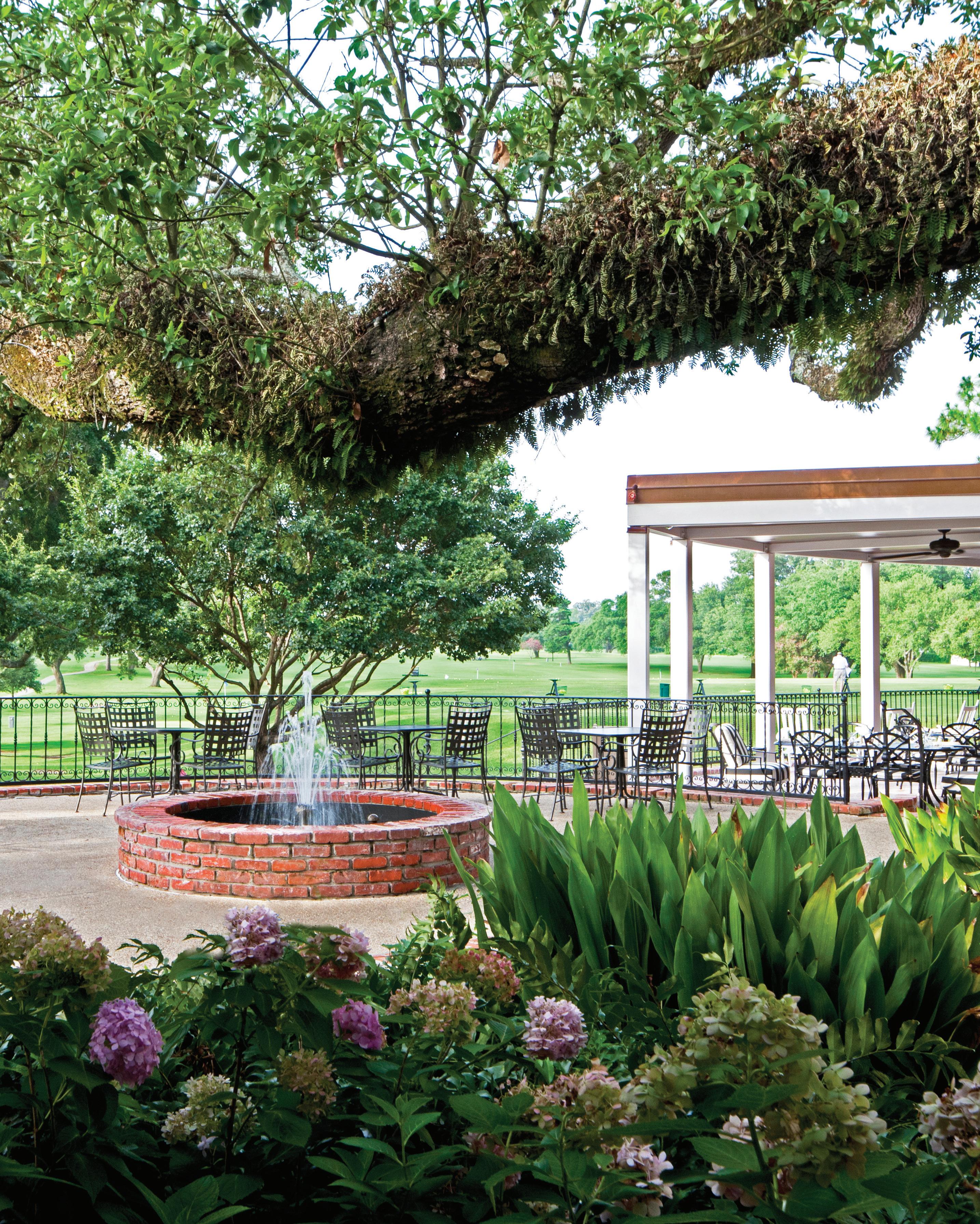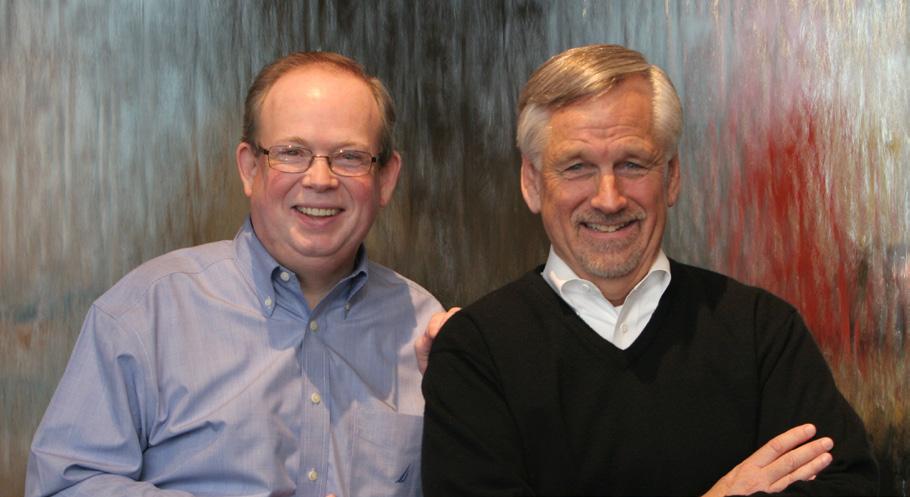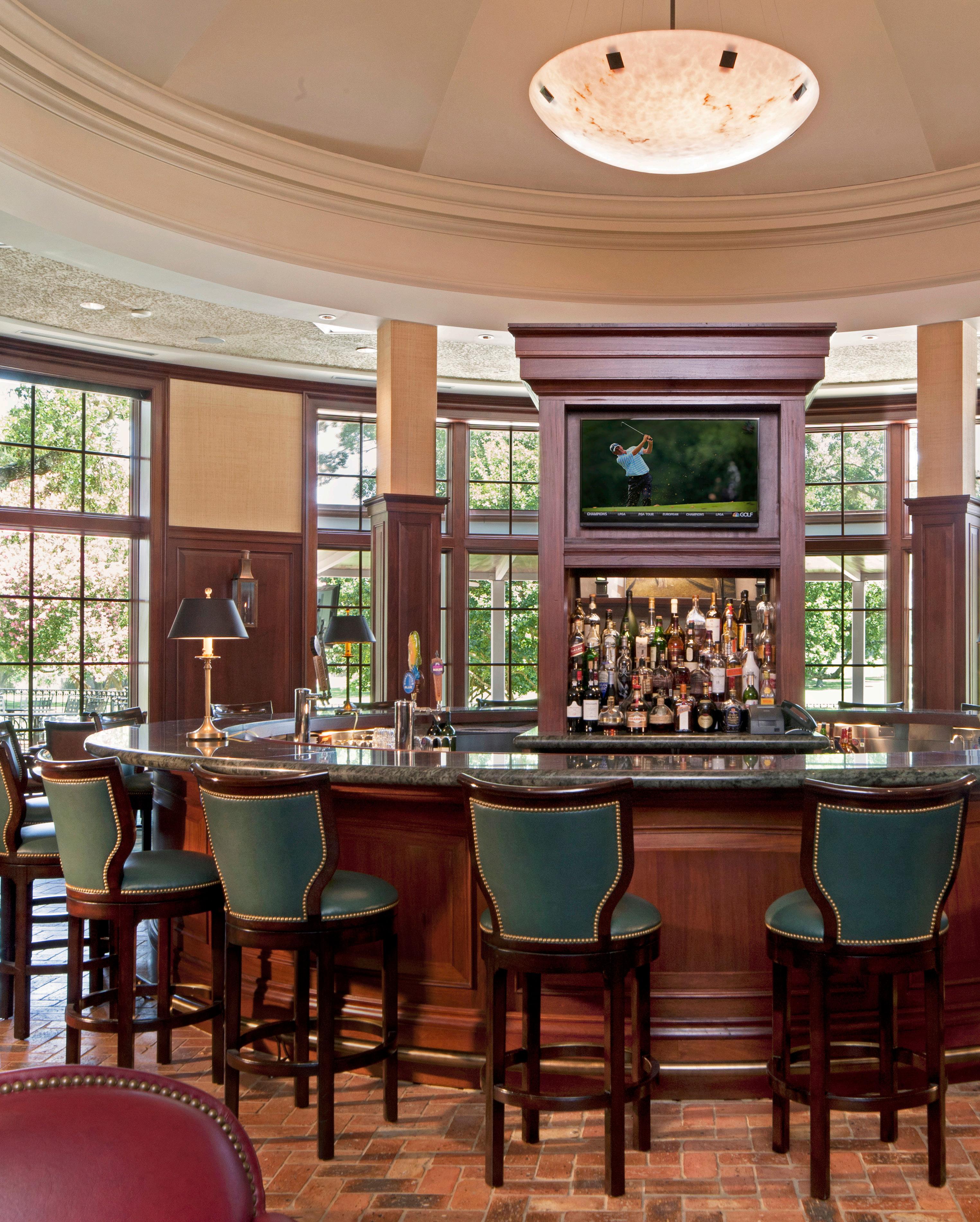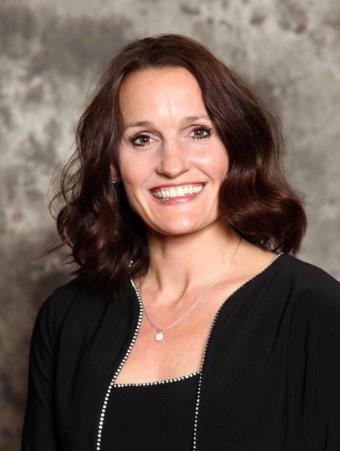
ISSUE N O 17 • WINTER 2018 CLUB ROAD A Chambers Publication Plus p .12 MEET THE MANAGER with Traci Bichalski, GM Great Oaks Country Club RELEVANT? Are private clubs still The New Role of Private Clubs in Today’s Society p .4 p.4 What’sInside? 2 / Leadership Resources 8 / Is Hiring a Membership Director Worth the Money? 10 / Becoming Female-Friendly 11 / Taking Cues from Hotels Baton Rouge Country Club, LA
Friends —
We’re more than halfway through winter and brighter, sunnier days are in sight! Spring is a time to restart, refresh, and renew. This sentiment carries through this issue as we focus on growth—for the industry, for our clubs, and for ourselves.
In this publication, we focus on how clubs are adapting as they journey to find their place in this ever-changing world—and what you can do as a club leader to help. Use our hand-picked resources to hone your leadership and management skills, read about how clubs are reinventing their brand through forward-thinking design, and learn more about ways clubs are embracing women and families.
We also get down to business discussing the benefits of hiring a Membership Director, and continue our Meet the Manager series, which provides insights into innovative and creative thinking from managers we admire.

And as always—email us with your thoughts or ideas on what you’d like to see in future issues of Club Road!

GREAT READS TO BECOME A BETTER LEADER

Double, Double by Cameron Herold

You won’t find theories or generalities in this downto-earth book, which offers practical tips on real-life situations every executive is bound to face on the road to success. Read more >>
What To Do When It’s Your Turn
by Seth Godin
The importance of doing work that matters, embracing tension, dancing with fear and making a difference. Godin breaks all boundaries in the world of motivational novels.
 Rick Snellinger Bob Hickman President & CEO Chairman of the Board
Rick Snellinger Bob Hickman President & CEO Chairman of the Board

EMAIL RICK EMAIL BOB


Read more >>

FEATURED A NOTE FROM CHAMBERS CLUB ROUNDUP
CHAMBERSUSA .COM 2 ] BALTIMORE / DALLAS / MINNEAPOLIS / DC CONNECT:
We’ve closed the book on 2017 and we’re well into the next chapter. This may mean a slew of different things for leaders around the world, but most can agree that growth, both personal and professional, is always necessary.
What can you do as a leader to benefit your club, its employees, and your relationship with the latter? If you’re feeling stuck, these five books are chocked full of great insights to help move you and your club management efforts in the right direction.

Slight Edge
 by Jeff Olson
by Jeff Olson
A new way of thinking— how internal changes can help you make powerful decisions from the simple daily activities in your life. Read more >>
Beyond the Talent
by John Maxwell
Talent is important, but it will only get you so far. The choices we make— not merely the skills we inherit—define greatness. Read more >>
Executive Presence
 by Sylvia Ann Hewlett
by Sylvia Ann Hewlett
Hewlett uses experience, analytics and illustrations to describe qualities needed to fully embody an executive.


Read more >>

FEATURED CLUB ROAD Issue No 17 / Winter 2018 CLUB ROAD is a Chambers publication. Editor-in-Chief / Creative Director: Lauren Gordon clubroad@chambersusa.com 410.727.4535 2 Club Roundup Becoming a Better Leader 4 Feature Are Private Clubs Still Relevant? 8 Down to Business Is Hiring a Membership Director Worth the Money? 10 Club Experience Shifting Perspectives: Becoming Female-Friendly 11 What’s Trending? A Five Star Experience: Taking Cues from Hotels 12 Meet the Manager with Traci Bichalski PLANNING • ARCHITECTURE INTERIOR DESIGN • PURCHASING CHAMBERSUSA .COM CLUB ROAD GET IN TOUCH! CLUBROAD@CHAMBERSUSA.COM / 410.727.4535

/ CLUBROAD ISSUE 17 / WINTER 2 018 FEATURED C LUBVIEWBLOG.COM 4 ]
The members are incredibly happy... It’s the most talked about bar in Baton Rouge. Everyone wants to be here!”
— Michael Masson, GM
Are private clubs still RELEVANT?
The New Role of Private Clubs in Today’s Society
It’s hard to believe it’s been ten years since the United States was in the midst of the Great Recession. Many industries were impacted by the financial crisis and the private club industry was no exception. Clubs across the country suffered and some were forced to close their doors forever. At the time, the industry faced much uncertainty and many were fearful for what it all meant for the future of private clubs.
Today, the energy in the industry is vastly different— much more upbeat. For many, the recession was an unfortunate wake-up call leading to the realization that this isn’t our grandfather’s private club any longer. Today’s memberships are diverse, complex and have different priorities than those from decades past. Still, with questions surrounding the future of golf and the club industry itself, some are left wondering:
ARE PRIVATE CLUBS STILL RELEVANT IN TODAY’S SOCIETY? We certainly think so—at least, they can be.
TURN THE PAGE TO READ MORE! >>

CHAMBERSUSA .COM [ 5 FEATURED
Club
Baton Rouge Country
Baton Rouge, Louisiana
THEN AND NOW
The private club industry is abuzz with talk of changing demographics and evolving lifestyles. Gone are the days of frequent formal events with evening-long dinners and dancing. Corporate memberships are becoming fewer and fewer; business deals are being closed on the golf course less and less; male-dominated households are no longer the norm. Instead, we see dual-income households, increasingly led by career-driven women, with parents who are equal in decision-making and looking for a comfortable environment for the entire family.
With the aging of the Baby Boomer generation comes the dominance of the even larger Millennial population—a generation which, according to Charles Schwab, is very conscious of their finances and committed to financial planning. For these members, value is key. They are looking for activities that fit their time-constrained social lifestyle—a place that welcomes spontaneity and embraces a more casual, unrehearsed routine, yet still makes sense in their family finances.
Since many club memberships have four generations of members under one roof, it can be challenging for clubs to successfully cater to such a wide variety of interests. Such an ambition requires striking a balance among programs and services to appeal to the younger generation without alienating lifelong members. But many forward-thinking clubs gladly accept this challenge and see it as more of an opportunity—a chance to reinvent themselves to provide what members are really looking for: an unparalleled experience. In actuality, it’s more of a necessity than an opportunity if clubs wish to continue to play a significant role in members’ lives.

ROI VS. ROE
In corporate life, savvy business men and women often discuss the potential return on investment (ROI) as part of their decision-making process. Private clubs, however, are a bit different than for-profit businesses and can’t always rely on these dollars-andcents analyses. Chambers’ Executive Vice President Skip Avery has over 30 years of experience in managing private clubs. “If club leaders made every decision based on our ROI, we’d never get anything done,” he jokes. “Instead, I like to think of it in terms of ROE—return on experience...”
Members are looking for purpose in their lives and a sense of belonging... and they are more than willing to pay for experiences that create wonderful memories to last a lifetime. The goal is to provide an environment that helps them do just that. At its core, a club’s experience is its brand— a unique culture that fosters a sense of community. By investing resources into enhancing the overall experience...
/ CLUBROAD ISSUE 17 / WINTER 2 018
C LUBVIEWBLOG.COM 6 ] FEATURED
CLICK TO KEEP READING >>
THE POWER OF DESIGN
Architectural design responds to the uniqueness of individual cultures. Around the world, buildings speak to the cities in which they reside, and tell a story about those who utilize them—the same can be said for clubhouses. Whether a club has been around for 50 years or 150 years, each has its own history with memories and traditions that are an essential part of a club’s culture.
As clubs evolve and adapt to modern times, this history must not be neglected. “The planning and design process for private clubs is delicate and personal,” notes Chambers’ President and CEO Rick Snellinger. “It’s about bringing your brand to life and creating a new environment—transforming a message into a shared vision that members can support...”
CLICK HERE TO KEEP READING >>
CELEBRATING BRAND
There are few greater examples than the new Riverside Clubhouse at Greenville Country Club (GCC) in South Carolina. As one of the South’s most historic country clubs, GCC has provided its members with countless memories for over 120 years, so when it came time to consider clubhouse renovations... “We knew our facilities needed to respond to the needs of our members—both past and present—but we couldn’t properly define those needs until we fully understood our direction,” says Greg Hobbs, GCC’s general manager. “We needed to think about the bigger picture from a broader, strategic perspective.” Chambers worked with GCC to develop...a vision for the future that embraced changing lifestyles and a multigenerational membership with a wide range...

CLICK TO FIND OUT HOW THIS VISION WAS BROUGHT TO FRUITION >>
TRANSFORMING SPACES
While reinventing sometimes means rebuilding, helping your club evolve doesn’t mean you need to start from scratch. In fact, making targeted improvements to specific areas of the club can be incredibly impactful. Snellinger says, “This can help clubs bite off a little at a time to generate excitement, leaving members eager for what’s to come.”
Chambers helped Baton Rouge Country Club (BRCC) do just that. At the time, BRCC was battling challenges with membership growth and age diversity. Certain areas of the clubhouse were reminiscent of a bygone era that celebrated formal evenings of dinners and dancing. Now, members were looking for a fun, casual atmosphere they could utilize spontaneously. The solution?...
KEEP READING TO FIND OUT HOW THESE SPACES WERE TRANSFORMED >>
CHAMBERSUSA .COM [ 7 FEATURED
Is Hiring a Membership Director Worth the Money?
 With Insights from Rick Coyne, CEO of PCMA
With Insights from Rick Coyne, CEO of PCMA
It is impossible to ignore the vast utilization shifts occurring in private clubs around the world. Once acknowledged, however, club leaders can find themselves feeling overwhelmed or struggling to know how best to welcome these changes with an appropriate strategy.
Holding tight to processes and techniques of years past isn’t going to help see your club through the coming years. A proper communication plan and brand image within your club is critical in relation to member engagement, retention, culture and overall satisfaction. Which leads many to an important question—who is the best person to help set these efforts in motion? Is hiring a Membership Director the answer?
To find out more, we spoke with Rick Coyne, chief executive officer of the Professional Club Marketing Association (PCMA)—an association geared toward educating, accrediting and representing the professional men and women who, as Membership Directors, make a significant difference in member relations and club experience.
Coyne reflects on the days when “membership secretaries” were the norm in private clubs. “These volunteer positions had a primary purpose of scrutinizing candidates being considered for membership,” says Coyne.
“Today, this has evolved into an important role that sets the entire state for a club’s brand significance, ultimately leading to the very perception of the club itself.” And of course,
C LUBVIEWBLOG.COM 8 ] DOWN TO BUSINESS
/ CLUBROAD ISSUE 17 / WINTER 2 018
perception is everything when it comes to the health and longevity of a private club.

“Successful clubs have recognized that by managing every message and every contact, they will enhance membership growth, value, retention, usage and satisfaction, each of which is an integral part of club sustainability,” Coyne remarks. He goes on to highlight that every successful business hires a Chief Financial Officer to oversee finances within the club to ensure consistent and uniform interdepartmental accounting in regard to spending, revenue and taxes. Therefore, it is just as important to hire a professional in charge of supervising the club’s brand, programs, events and messaging.
And even more importantly, the right professional needs to be hired—someone who understands their audience and can accurately reflect the clubs varied needs based on culture, gender, age and interests. Coyne believes strongly that this should not be left in the hands of the administrative assistant, general manager or various departmental managers, but rather someone who is hands-on, full-time, and has the right experience, voice and expertise.
Retention vs. Recruitment
In practice, this seems to hold true. We also spoke with Shawn Wilkes, general manager/ COO of Cherokee Country Club in Knoxville, Tennessee, regarding his experience with the
club’s recent membership growth. From 2006 to 2012, Cherokee faced a slight, annual decline in membership numbers. Around that time, the club hired a dedicated Membership Director, which led them to gain an average of 50 members in both 2016 and 2017, leading to an average growth of 20 net members in each of those years. The increase in member retention, however, has been even more impressive.
Shawn
In private clubs, two key strategic drivers for success are membership recruitment and membership retention. “Every year, clubs can expect attrition,” says Chambers’ President and CEO Rick Snellinger. “Members will either move away, lose interest in the club because they no longer see the value, or unfortunately pass away. Clubs must continue to seek out new members to keep membership levels stable from year to year.” On the other hand, it is equally important—if not more important—to put considerable efforts into retaining a club’s existing members. After all, this is how clubs create the experience that yields their brand.
DOWN TO BUSINESS CHAMBERSUSA .COM [ 9
Our primary focus lies on better engaging current members...There is a positive energy that is created from developing positive relationships between members and staff.
—
Wilkes, General Manager Cherokee Country Club, TN
Click to keep reading & learn more.
BECOMING MORE FEMALE-FRIENDLY Shifting Perspectives
When you think of a private club…what do you envision? High-level executives closing deals on the golf course? A group of “old guys” exchanging witty banter in a smoke-filled cigar lounge? Facilities that offer a wide range of amenities to men, women and children, embracing the family unit as a whole? We hope you answered the latter—but if not, you aren’t alone.
For decades—and in some cases, for more than a century—private clubs have been known as a place where members can enjoy unique, exclusive, and memorable experiences. Traditionally, however, they have also been regarded as male-oriented and male-dominated. Today, women play a vastly different role in society than they did 20, 30 or 50 years ago. As clubs continue to adapt and evolve to remain relevant in today’s society, they are becoming much more age diverse and gender neutral. From club-wide activities, to committees, to leadership roles, the female authority is becoming more and more common across the industry—it’d be foolish to ignore it.
Women in Leadership >>
More and more we are seeing women in leadership roles in private clubs, offering unique insight from a fresh perspective.
Programs & Services >>

Today, moms are actively taking part in financial decision-making for the family. And they want to make sure there is something at the club for each member of the family.


Appropriate Spaces >>
Equality in programming and equality in facilities. Does your club have both?
CLUBVIEWBLOG.COM / CLUBROAD ISSUE 17 / WINTER 2 018 10 ] CLUB EXPERIENCE
CLICK BELOW TO LEARN MORE:
LIVE.
WORK. PLAY.
A Five-Star Experience





How Private Clubs are Taking Cues from Hotels
In many ways, a great private club is much like a great hotel. It has a distinct sense of place, creates a feeling of warmth and community, and provides valuable services that enhance the lives of its guests or members. Keeping this in mind, it is not surprising that private clubs have often looked to the hotel industry for inspiration.
Though hotels and private clubs face very different challenges in their respective industries, the ways they cater to today’s guest (or member) regularly intersect. Both hotels and private clubs must create a “home away from home” experience to bring value. In order to accomplish this, their amenities and design must continuously evolve in the face of today’s ever-changing, fast-paced world.
Here are a few ways that hotels are influencing the private clubs of tomorrow.
A Communal Lobby
Gone are the days of “living rooms” that often remain unoccupied in the clubhouse. Instead, lobbies should be multi-use areas that encourage members to linger and connect with fellow members.
READ MORE >>
Elevating F&B Offerings
From “fast casual” dining styles, to craft brewery selections, to farm-to-table style menus, hotels keep their menus fresh and on trend—and clubs should too.
READ MORE >>
The Grab n’ Go Lifestyle
Members are busy, but this trend responds to their time-constrained needs, while appealing to multiple tastes and interests.
READ MORE >>
Concierge Services
These year-round, life-enhancing services provide added value and an extra level of convenience to a member’s club experience—and their daily lives.
READ MORE >>
Next-Level Technology
Robots may not be appropriate for clubs... but have you thought about how tech trends can be adapted for private clubs?
READ MORE >>
CHAMBERSUSA .COM [ 11 WHAT’S TRENDING
Click here to read the full article.
MEET THE MANAG ER
Private clubs are becoming increasingly dynamic as the industry continues to adapt to a changing and complex world—in part, thanks to the creativity and innovation enacted by individuals bringing a fresh yet respectful perspective to the modern private club experience.
In our last installment, we gathered insights from Paul Spencer about enhancing member communications, catering to families, and enhancing levels of service throughout the club.
In this issue, we spoke with Traci Bichalski, CCM, CCE, general manager of Great Oaks Country Club in Michigan. Traci brings 23 years of professional experience to this role, having quickly risen to leadership positions early on in her career. Traci’s thoughtful perspective and canny expertise help her bring fresh ideas to Great Oaks while enhancing the overall experience, connectivity and sense of community within the club. We sat down with her to discuss her journey thus far, as well as some of the exciting changes she has made since her arrival at Great Oaks.

Getting to Know TRACI BICHALSKI
GM at Great Oaks Country Club

CR: How long have you been in the private club industry?
TB: I have been working in the industry since 1995. I actually started my journey as a Beverage Cart Girl at the Champions Club at Julington Creek. I was living off the first fairway and looking for a part-time job, so this seemed like the perfect fit. Within weeks…really, weeks!...I was offered the F&B Manager role—thanks, in part to... READ MORE >>
CR: What specific programs or facilities has Great Oaks incorporated to create the relaxing environment the members are looking for?
TB: We expanded our patio on the lower level and added a second fire pit, which is very popular...We try to offer unusual (but fun!) activities, too, like our Arctic Open—a golf event held in the winter that uses a tennis ball and two golf clubs. Afterward, we serve... READ MORE >>
CR: What has Great Oaks done to increase member recruitment?

TB: One approach that we’ve found to be very successful is our “Pass or Preview” program. This allows prospective members the chance to temporarily bypass the initiation fee and only pay dues for the first 30 days as a trial period. Once the month is over, they... READ MORE >>
CR: How do you celebrate Great Oaks’ history while continuing to evolve and move forward to the future?
TB: Our 50th anniversary is coming up which is very exciting! To prepare, we created a Heritage Committee to help plan for the future to ensure we are prepared for the next 50 years as well... READ MORE >>
CLICK HERE to read more of Traci’s insights on embracing families, becoming female-friendly, giving back to the community—and more!
/ CLUBROAD ISSUE 17
CHAMBERSUSA
12 ] CONNECT: BALTIMORE / DALLAS / MINNEAPOLIS / DC
.COM
MEET THE MANAGER






 Rick Snellinger Bob Hickman President & CEO Chairman of the Board
Rick Snellinger Bob Hickman President & CEO Chairman of the Board





 by Jeff Olson
by Jeff Olson
 by Sylvia Ann Hewlett
by Sylvia Ann Hewlett







 With Insights from Rick Coyne, CEO of PCMA
With Insights from Rick Coyne, CEO of PCMA






